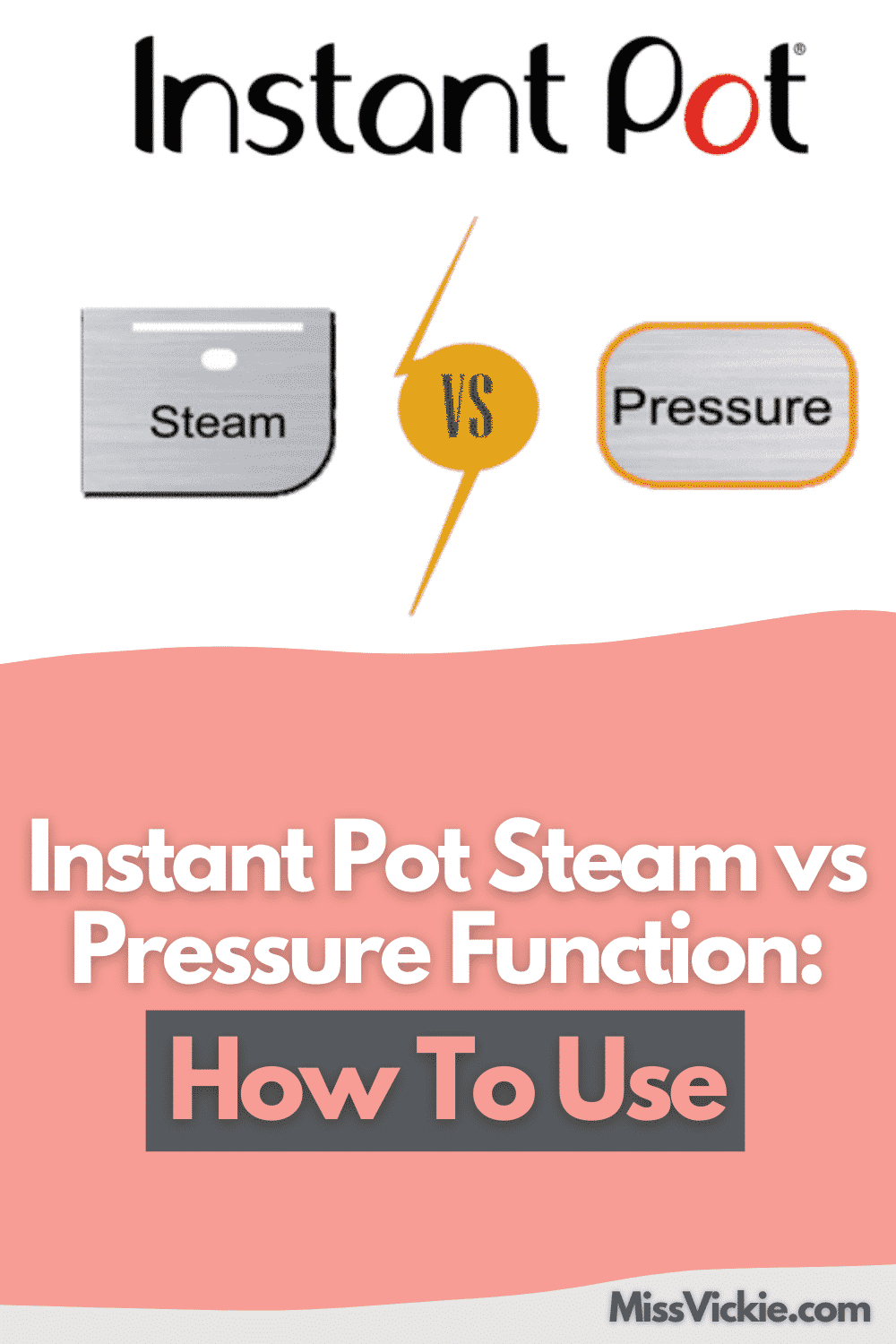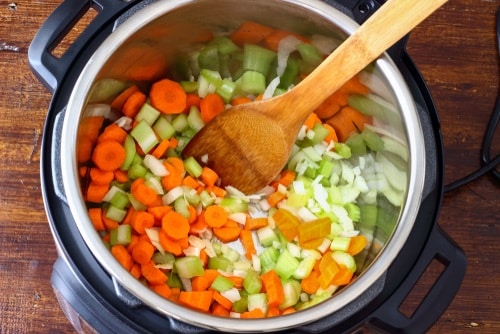
Instant Pot Steam vs Pressure
The Instant Pot comes with a steam function, and you can also use it as a pressure cooker. Some people might confuse these two processes as they seem similar.
You may also wonder if there are any advantages to cooking over steam rather than just hitting the pressure cooker function? Let’s take a look at the Instant Pot steam vs pressure function.
What does the Instant Pot steam function do?
Firstly, let’s look at what type of foods you would steam in your Instant Pot. You’d use the steam function for basically anything you’d boil.
So, think fish, chicken, vegetables, fruit for compotes, eggs, and even tins of condensed milk for caramel. You can even use it to make a steamed pudding.
Fish comes out particularly well when steamed–moist and flavourful. All you need to do is serve it with a squeeze of lemon juice and some seasoning.
Chicken breast or shrimps for a quick salad are also great when done in the steamer. Vegetables, if timed correctly, turn out crisp and retain more of their flavor than when boiled.
It’s also much healthier to steam than boil them because so many nutrients are thrown away with the cooking water after boiling.
The first thing to know about using the steam function is that this is not the same as steaming on the hob with a conventional steamer or water-filled saucepan.
The Instant Pot steams under pressure, so the whole process is much faster than traditional cooking but is not easy to control.
Instead of steaming under pressure, you can also use the Instant Pot as a traditional steamer by adding water and food and hitting the sauté button. You can’t use the pressure cooker lid for this, but glass lids are available as accessories.
This method is much easier to control, but unless you plan on doing a lot of steaming, it might not be worthwhile to go to the added expense of buying a glass lid for this purpose.
How do you use the steam function?
- Add the water to the inner liner pot – at least 1 cup.
- Place the trivet on the bottom of the inner liner.
- Put the food to be steamed, such as fish or vegetables, into a basket or rack.
- Rest this on the trivet and set the timer.
- Close the lid and press the steam button. Once the Instant Pot beeps and the display panel indicates that the water has heated up and steaming has begun, your timer will start counting down.
- Once it has reached the end of the time, it is important to do a quick-release to stop cooking immediately.
Practice makes perfect
Using the steam function takes a little practice because the pressure cooker is sealed. You cannot check on the food, and many people find that it is very easy to end up with soggy, overcooked, mushy food.
Timing is everything
You have to be very precise with timings when steaming because this cooking method turns from perfect to mushy and overdone within seconds.
There are timing instructions provided with the recipes, but of course, fresh produce is all slightly different, so you may find that one day your green beans are steamed perfectly and the next, overdone and mushy.
It’s better to cook the produce for a minute or two less than recommended because you can always steam it for a little longer if it’s not quite done.
However, if your first experiments are a little overdone, use the soft vegetables to make soup. This way, you will not be wasting anything.

Make more than just steamed food
Remember to keep the cooking liquid from fish or chicken at the steamer’s bottom to use in stock. Although the food will not be immersed in the water, the juices will drip into it, creating a tasty cooking liquor.
Here are a few recommended steaming times for various foods to give you an idea:
- Broccoli, green beans, carrots, cabbage – 1 min
- Butternut, new potatoes – 15 min
- Hard-boiled eggs – 7 min
- Apples, pears – 5 min
- Fish – 2 min
- Frozen chicken breast – 45 min
Many people do enjoy using the steamer function once they have mastered the knack of using it. After some trial and error, you will probably find that you can produce perfectly steamed food without too much hassle.
Please remember to slightly underestimate the cooking time so that your food will not become soggy and overcooked.
So how is the Instant Pot Steam vs Pressure compared?
| Steam | Pressure |
| Uses minimum amount of water 1 cup. | Often uses more than one cup of water or stock. |
| Food sits above the water in a basket or on the trivet. | Food sits in the cooking liquid, which can help to tenderize tough cuts of meat. |
| Cooked under pressure. | Cooked under pressure |
| Best for quick-cooking foods like vegetables, fish, eggs. | Best for foods requiring a longer cooking time like stews, soups, tough cuts of meat |
| Quicker than conventional steaming. | Quicker than conventional cooking methods |
| You must quick-release the pressure once the cooking time is up to stop food cooking. | There is no need for a quick release. |
Conclusion
In our opinion, the steamer function is a bit fiddly, and the results are no different from just cooking under pressure in the usual way.
Remember, the main thing is to keep to the recommended cooking times and quick-release the pressure once the food is ready so that it doesn’t continue cooking while the pot is cooling down.
The only difference between an Instant Pot’s pressure and steam functions is that the steam has pre-programmed times that make the precise timing required for steaming possible.
When using “steam”, you are still cooking under pressure so that everything will be done a lot faster. Also, you will not be immersing the ingredients in the cooking liquid but suspending them above it.
For vegetables, we’d recommend using this function for the harder ones like butternut and potatoes, but not for the quick-cooking ones like broccoli and cauliflower.